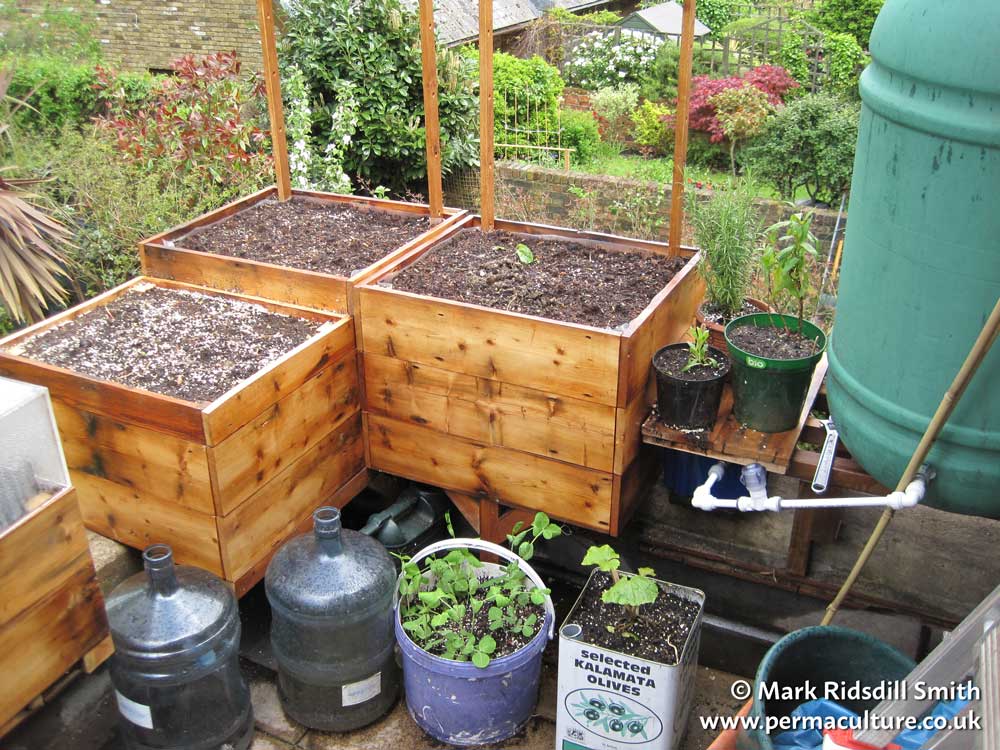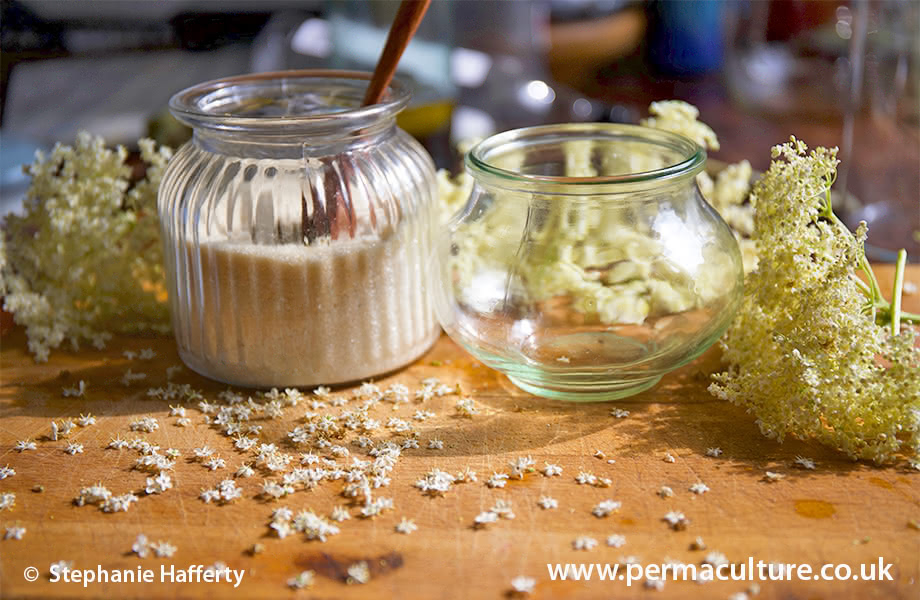This season brings a mixture of bright clear days followed by bitterly cold nights and blustery, rainy periods that batter the fresh growth in the garden. The wind seems relentless in its pursuit of flattening everything in its path as temperatures climb and plummet in equal measures. Over the last four to five decades, I have seen the change in the weather patterns. Changes that were predicted by scientists. In the temperate climate of Wales, 52° north, the weather seems wetter for longer and the storms harsher, more violent and capable of doing more structural damage than before. The way in which we garden has had to adapt in response to the shift in weather patterns.
As the number of daylight hours increases, so does my enthusiasm for being outside and for beginning the process of sowing seeds of annual vegetables. Spring flowers bring a welcome splash of colour in the garden and small green buds appear on early flowering trees. The transformation of the landscape begins and once again the focus moves from the ground to eye level and above.
In the vegetable garden, this is a busy period of sowing seeds, potting on, planting out, watering and caring for young plants and is a time filled with hope for a productive and abundant harvest in the months ahead.
By the end of spring, house martins and swifts have returned to nest in outbuildings and in nests that cling to the sides of the house, just under the eaves. Blossoms in the hedgerows have come (and in some cases are long gone) and grasses and wildflowers have grown rapidly, flowered and are casting their seeds for next year’s plants.
This is the hungry gap: the period during which there are traditionally fewer fresh vegetables to harvest. The winter crops are mostly finished, but the new season’s growth is not yet ready to take to the kitchen. However, with a little judicious planning, it is possible to have a plentiful supply of food to harvest, although choice is not as wide as later in the year.
Also known as Hamburg parsley, this interesting root vegetable is a relative newcomer to our kitchen and garden. Not that it’s a new plant, simply that we’ve only discovered it in the last few years. Sown in spring to early summer, the leaves can be harvested as fresh green parsley, but with the added advantage that the roots can be harvested during the winter and early spring as an alternative to parsnips. They have a parsley taste and texture of parsnips and are pale cream or white in colour. In our garden, they haven’t grown large like some of the parsnips do, but as a dual-purpose plant, I feel it is worth sowing a row or two. The roots can be harvested throughout the winter, but by the end of March I have found that they start regrowing and the roots become woody and less appealing. As a member of the umbellifer family, if left they will run to seed providing a show of flat flower heads with hundreds of tiny flowers.
There are many edible flowers to be harvested during the growing seasons and the early flowers include primrose, dandelion and magnolia.
To eat the flowers, remove the green part behind the petals and the pistils, which are usually located within the centre of the petals. Perhaps it is easier to think of it as ‘only eat the petals’.
Borage flowers seem to open at the merest suggestion of sunshine. I grow both blue and white varieties of borage and the blooms of both add a hint of warmer days to our salads. I do not take all the available flowers from a plant because they provide food for any bees or other pollinators that take advantage of the gentle spring sunshine. Winter pansies and violas are also edible; they will flower throughout the winter months and into spring, adding colour to the garden and to the plate. Grown in tubs around the gravel yard of our home in Monmouthshire, they scattered their seeds freely and each year I would carefully lift the young seedlings and transplant them into beds and borders to grow on.
Some flowers are useful as a garnish, but also as a flavouring. Calendula has delicately fragranced petals that can be used as a substitute for saffron. Magnolia petals have a gingery taste and are ideal for making a syrup. The colour of the petals will determine the eventual colour of the syrup.
This is one of the most special foods in our harvesting calendar. The harvesting period for asparagus is just a few weeks and I have never grown it in sufficient volume to be bored of eating it by the time the harvesting finishes. This is a perennial vegetable that can be grown from seed, but is more often purchased as one-year- or two-year-old crowns. They are long lived plants and once established, will provide a harvest for twenty years or more.
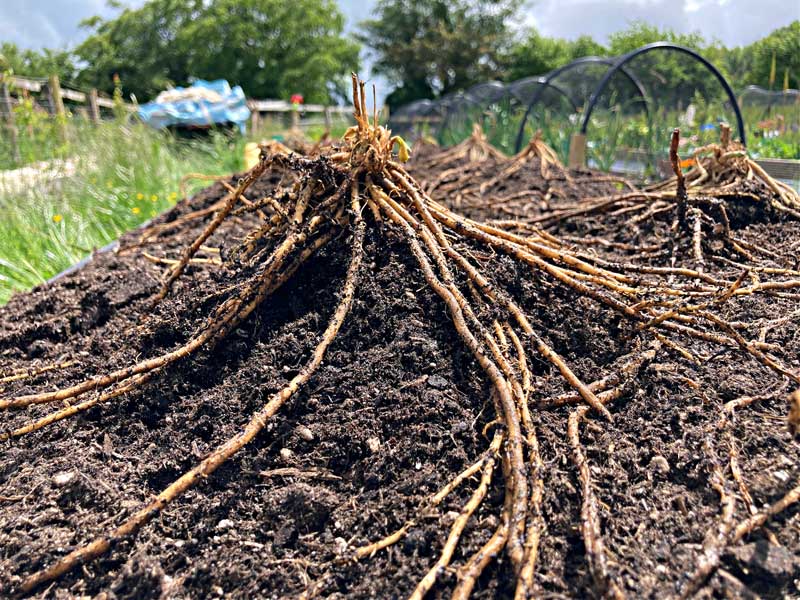
I haven’t found a successful way to preserve asparagus leaving it with an enjoyable texture. Freezing leaves it mushy upon defrosting and canning makes it much too soft for our liking. For this reason, it is one of the few vegetables that we enjoy solely during its harvesting season. Some years we begin harvesting during April and with other weather conditions, it is May, but whenever it is, the spears are appreciated. As a word of caution, asparagus contains asparagusic acid and during digestion it is broken down into byproducts that contain sulphur. This can make your urine smell unusual; there is nothing wrong with your asparagus, it is a natural process of digestion.
When the harvesting period is finished, the fronds of the asparagus grow tall; they are light and almost fluffy in their appearance. They do not block out all the light to the soil below and so that space can be used for another crop. However, planting any root crop is not advisable as the asparagus roots will be disturbed when you harvest the root crop. Strawberries make good companion plants for asparagus. They act as a living mulch, covering the surface of the soil, thus reducing water evaporation and erosion by wind or rain. They don’t grow very tall, so still allow air to flow around the asparagus stems. Strawberry plants are fairly shallow rooted, so can be carefully lifted out of the bed when they become less productive.
It is possible to grow peas throughout the winter with a little protection or under the cover of a greenhouse or polytunnel. For overwintering peas, choose a hardy variety. There are two types of peas: smooth skinned peas referred to as round peas (which will grow from a November sowing) and wrinkled peas, which just hold too much water around them and easily rot before they have a chance to germinate. My preferred variety of hardy, round pea is ‘Meteor’. It is low growing, therefore needs little support and is less likely to be damaged by winds.
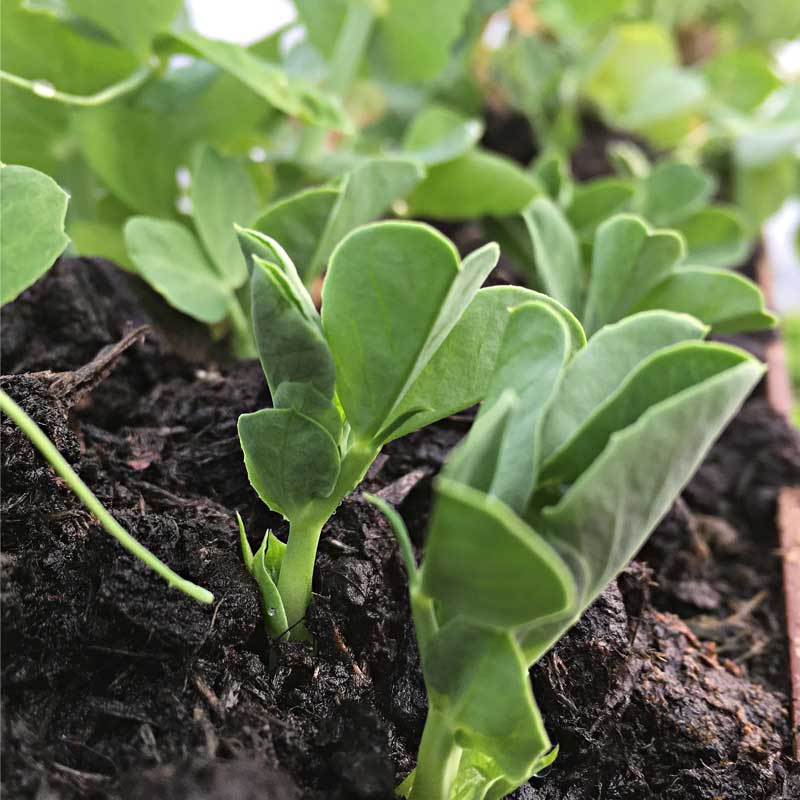
In the past I’ve sown them in a length of gutter suspended from the frame of the greenhouse and more recently, the frame of the polytunnel. And that works well for harvesting pea shoots to garnish meals or add a little pea flavour to salads. Calling it a little pea flavour does those delicate shoots an injustice; the intensity and full, fresh pea taste that those little stems offer is quite remarkable. But growing them in a length of gutter requires regular attention to watering because the compost can dry out quickly, stunting the growth of the pea plants.
I’ve also sown directly into the ground. Those that haven’t ended up as a tasty snack for mice and other small creatures have grown enough in the late autumn to survive the winter. Equally I have sown them in late February or early March and they have slowly grown away to produce not only pea shoots, but pods during the hungry gap.
Peas sown during April and May, for garden growing outside, are usually of taller varieties. They need some support and will scramble up pea sticks or netting. I’m not enough of a pea connoisseur to have favourite varieties. On the whole, very few peas make it to the kitchen for meals, instead they are eaten as I wander around the garden each day, sampling vegetables as I go.
Mangetout, sugar snap or snow peas will grow happily under cover too, usually taking around 8-10 weeks to produce their flat, sweet pods which are harvested while the peas inside are still immature and tiny dots held within the tasty vegetable wrapper.
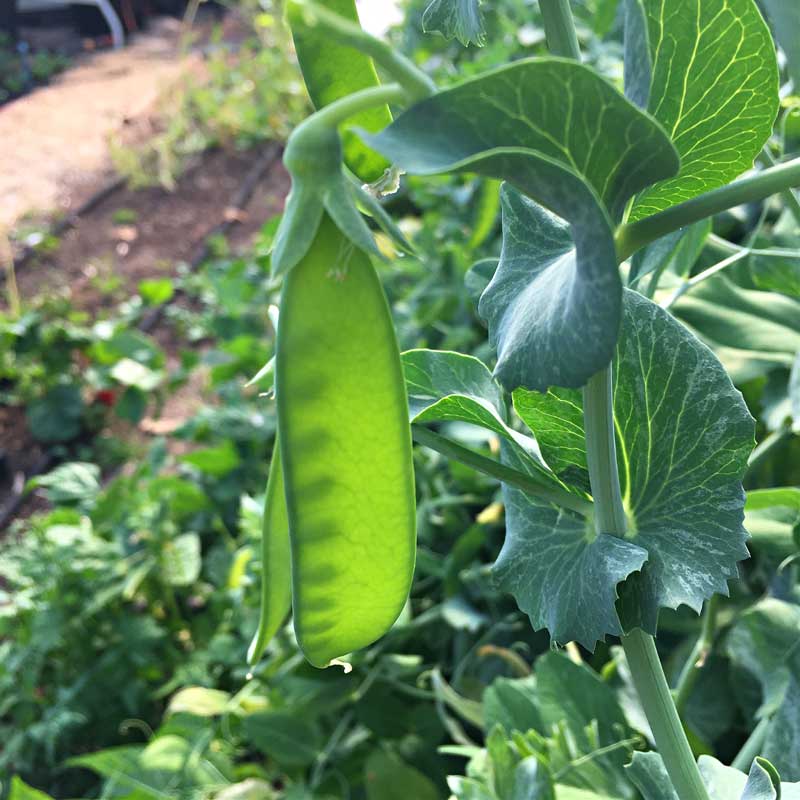
If sown in succession, a few seeds every two weeks, a harvest can be obtained throughout much of the hungry gap. I have never been this organised. I sow once and pick a few shoots for use in the kitchen and then leave the plants to grow until the pods are around 7-8cm (3 inches) long, at which point I harvest almost daily. I use some fresh in meals and am then reminded that although we like them occasionally, mangetout (which means ‘eat all’) is not a priority food for us, so I freeze most of the harvest and consign it to a lonely existence somewhere near the bottom of the chest freezer. I use a few, now and then, in stir-fry meals, but frozen mangetouts tend to lose their firm texture and are rather a let-down. I have thought of using them to make a pea soup, but neither Mr J or I are terribly keen on that either. The lesson that I ought to learn from this annual ritual, is to grow fewer mangetout and limit the number of seeds sown to give us a few tasty meals each year rather than a wasted glut. If there are mangetouts left in the freezer from the previous year, I add them to the compost heap, but of course, it would be better not to sow so many in the first place.
This is an extract from Liz Zorab’s new book, The Seasoned Gardener. You can order it HERE.
Liz spent several years transforming her 0.8 acre plot in Monmouthshire. She is now regenerating an over-grazed 4.5 acre site using permaculture practices.
